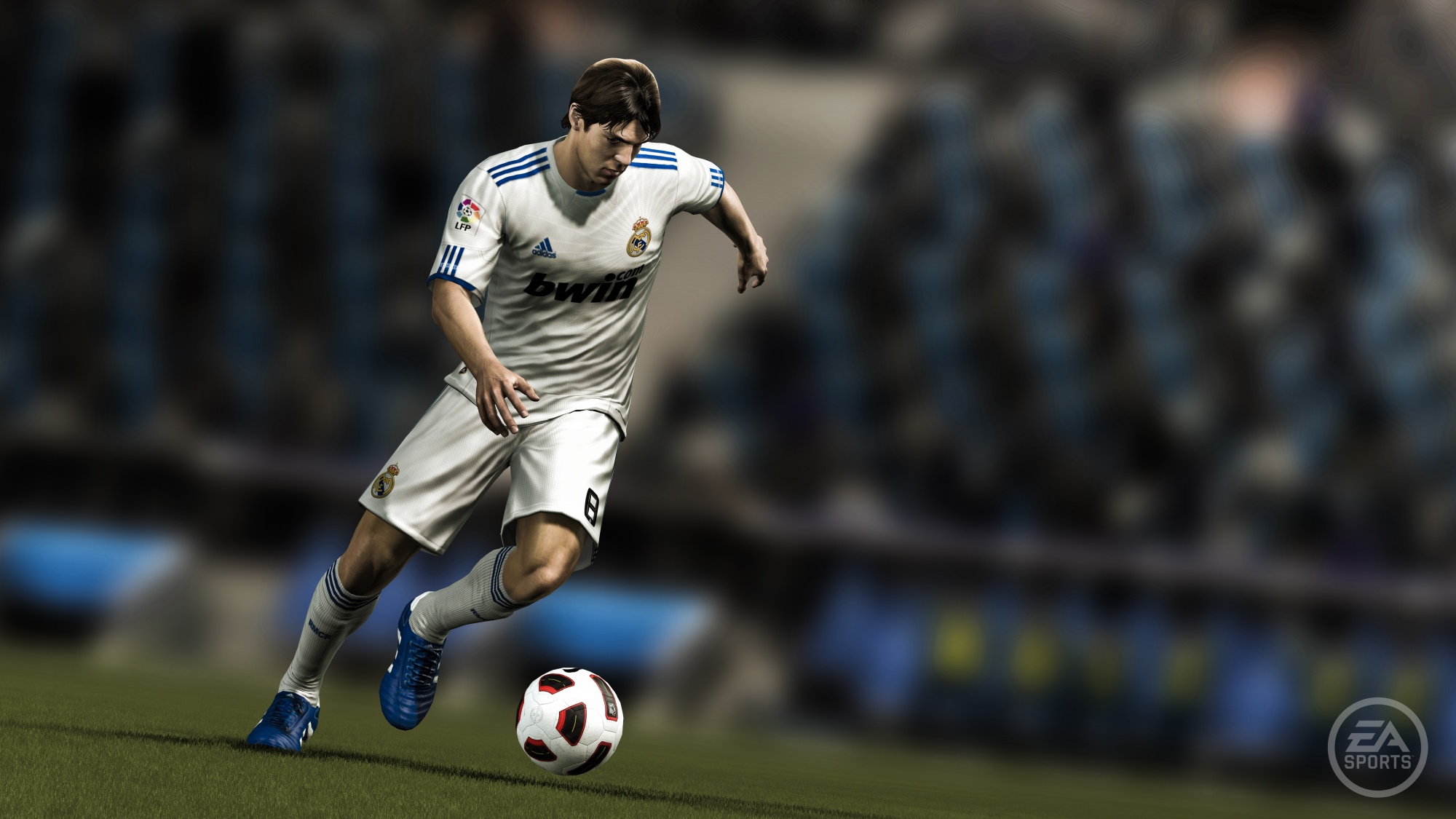It’s the 88th minute, and Tottenham trails Arsenal 2-1. Tottenham’s players are spent, emotionally and physically, but confident that they will equalize. If they can just get the ball to Gareth Bale.
Bale waits patiently on the sideline for his teammates to work the ball around to his sector of the pitch. He gathers the ball at midfield, finagles his way around the initial defender, and BOOM – he is bolting down the left flank, in the clear with a head of steam. He swiftly enters the 18-yard box, cuts back, and aims a shot at the far post. The ball curls around the goalkeeper’s outstretched fingers and ripples the side netting. Butter.
“NOOOOOOOOOOOO!” It is 2:30AM, and people are sleeping just on the other side of this dorm’s paper-thin walls, but Samir does not hold back his cry of anguish. He moans again, and presses his controller against his forehead as Bale runs to the corner flag with a triumphant fist in the air. He had done it. Well, I had done it. I had tied up this game of FIFA 12 in its waning moments. I had reduced Samir to a pathetic, tormented shadow of his former self. His extreme, but understandable reaction made my own physical celebration unnecessary. So I just sat there silently and basked in the glow of how cool I was.
Chill bros across the country report a similar emotional investment in FIFA 12. While the FIFA video game franchise has always been reputable, only recently has it become the premier sports game and a “standard” game on the level of Modern Warfare and Halo. In late 2009, FIFA 10 sold 1.7 million copies worldwide in its first week. The next year, FIFA 11 sold 2.6 million copies in its first week. The year after that, FIFA 12 sold 3.2 million copies. The global success of FIFA is unsurprising. I am interested in its apparent stranglehold on American males age 15-24.
I attribute much of FIFA‘s rise in America to the 2010 World Cup, hosted by South Africa. The 2006 World Cup was hosted by Germany. Nobody gives a shit about Germany. South Africa, on the other hand, was chic. With the abolition of apartheid, it had (seemingly) emerged from the shadows of its dark history, and thus had ripened to endear itself to the (white) American mainstream. Before the 2010 World Cup, the only South Africans commonly known to Americans were Nelson Mandela, and Matt Damon in Invictus, and the dude who wrote Kaffir Boy. Now, we were able to blow awesome vuvuzelas and cheer on South Africa, the country and its soccer team, lovable underdogs both.
Landon Donovan’s eleventh hour goal against Algeria to send the US into the knockout round was too much for Americans. We ate it up. After slogging through the first 99% of group play, the hometown squad’s clutch goal seemed to validate American soccer in its entirety, and we welcomed our boys home with open arms that summer of 2010. We even let EDM in too. Just as importantly, in that magical month we had become fond of various international stars, and we were determined to follow them as they returned to their clubs in the fall.
After the World Cup, most American soccer fans adopted Manchester City as their favorite European side. Yet the season is long, and it is difficult to keep tabs on a team playing a few thousand miles away. Since the World Cup, American soccer fans have done four things to stay current on the state of soccer: watch El Clasico (Real Madrid-Barcelona), watch the Champions League final, watch individual highlight reels on YouTube, and play FIFA.
Watching El Clasico is a guaranteed home run; always a high-level of play, and afterwards everyone gets to jock Messi and talk excessive shit about Cristiano Ronaldo. Watching the Champions League final allows us to properly assess the hierarchy of soccer clubs in Europe. It also allows us an opportunity to reminisce about watching Liverpool’s epic comeback against AC Milan in the 2005 final, when in reality we just watched the highlights on YouTube.
Indeed, YouTube is a vital resource for the contemporary American soccer fan, especially when used in tandem with FIFA. For example, I first that knew Gareth Bale was awesome after watching this video (bonus: he slangs dick at 1:40. maximize the screen for full effect). As an owner of both FIFA 11 and FIFA 12, I am able to confirm Bale’s improvement over the course of a year; in 11, he was rated an 81, and and in 12, he was rated an 86. Conversely, Inter Milan’s Diego Milito was rated an 86 in 11, but only an 81 in 12. Clearly, the ratings people had been influenced by the pair of goals he scored in the 2010 Champion League final. Between two congruent editions of FIFA, I not only feel attuned to the state of the game, but I get to participate in its virtual counterpart.
If FIFA‘s usefulness as an annual gauge of global soccer since the World Cup isn’t enough, the gameplay itself has gotten unreal. The sport of soccer is about fluidity and organic movement, unlike the punctuated equilibrium and tactics that characterize football. Improvements in video game engineering, seen in graphics and physics engines, have taken FIFA to the next level and left Madden in the dust. Vastly improved realism in the more recent FIFA games has created an arena in which we dictate the movements of players of varying styles and skills. Unlike with Madden, which uses predesigned plays, the FIFA player is given creative agency, and thus takes greater ownership of the course of each game.
Us Americans can’t be European hooligans, because we have to apportion out our hooliganism across football, basketball, soccer, and to some lesser extent, baseball. FIFA does us a joyous service in bringing our raging, drunken inner soccer hooligan to life. I find great solace in the fact that future FIFA games will only get better, that I will always be able to take over games with Gareth Bale, and that Samir can brighten my day by uttering a single world with an upward inflection at the end: “FIFA?”




